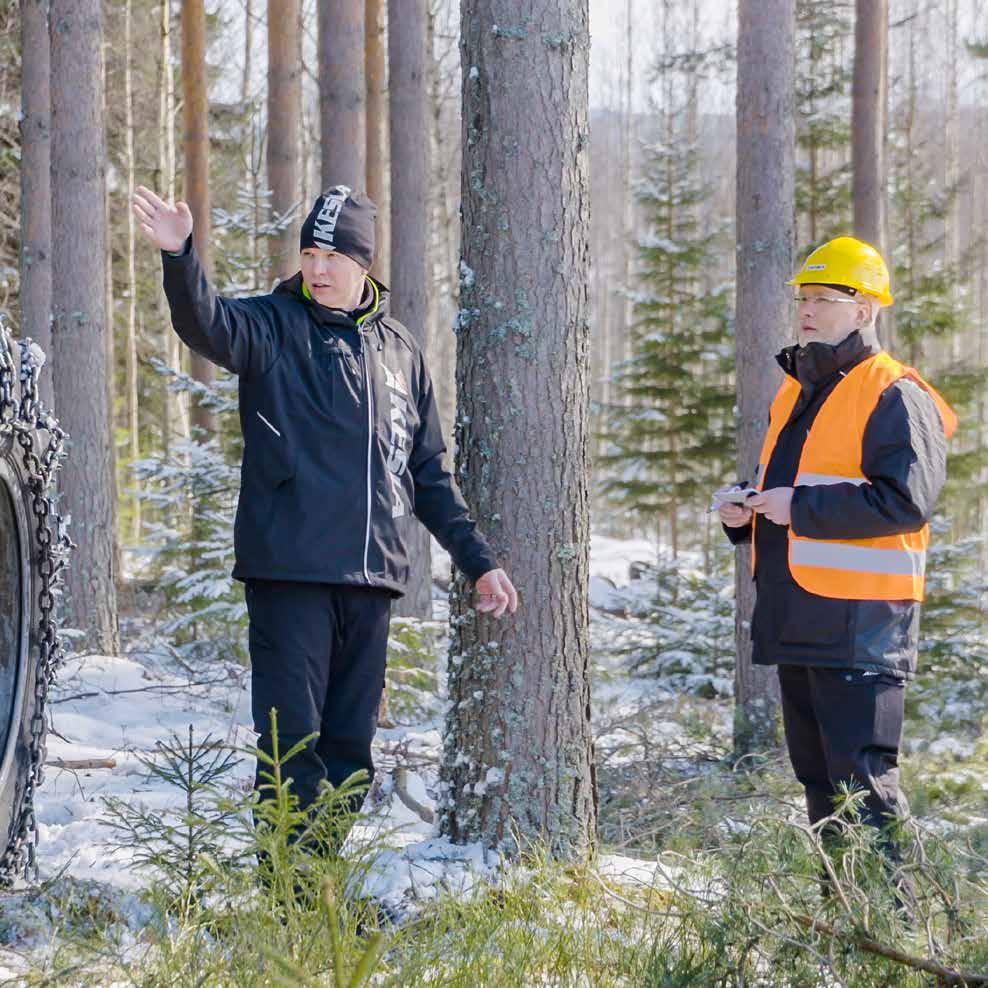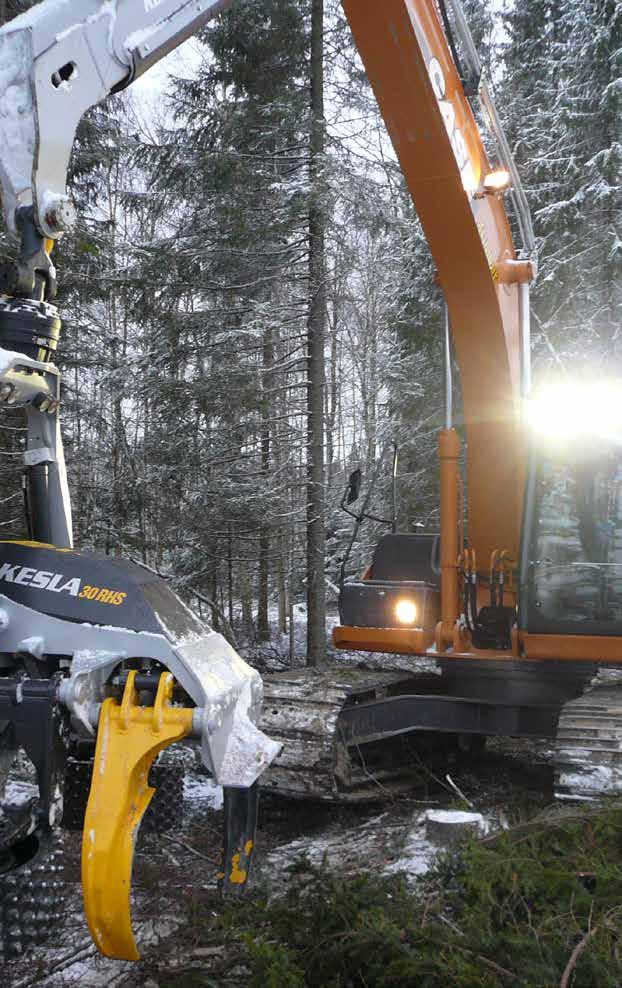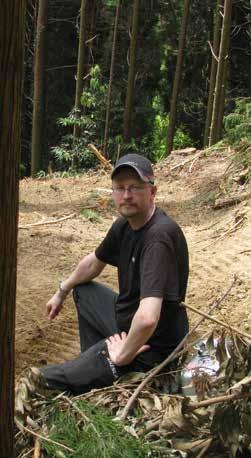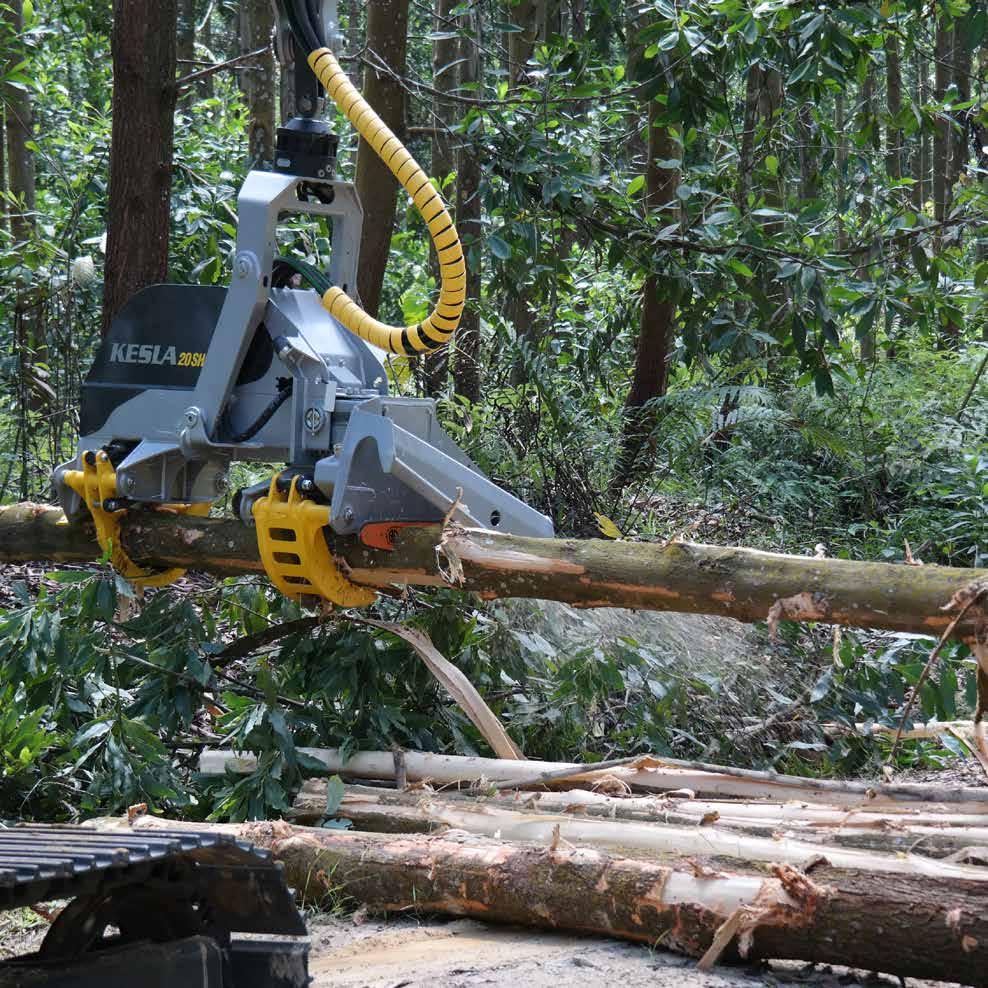
5 minute read
Expediency above all
For Kesla, user experience is a competitive advantage and the expediency of machines is a virtue. The user is also the starting point for product design. In the photo the harvester entrepreneur Juuso Laukkanen and Product Designer Paavo Alhainen.
In Finland, the axe and bucksaw were commonly used in timber harvesting until the 1950s. The proper mechanisation of logging – felling, delimbing and bucking – began in Finland in the 1970s. Kesla has been heavily involved in this development. The mechanisation of logging is also inevitably progressing in the emerging global market. Kesla is once again at the centre of events.
In emerging markets, finding your own niche in the market segment and organising a network of dealers and partners and after-sales services require sustained and persistent work. Competition is often intense. Success may require much more than the best possible machine from the customer’s point of view. “In South America, for example, Finnish forest machine manufacturers have competed for a place in the sun and noticed that the competition is not only about the souls of forest machines entrepreneurs. Forest companies, which act as major contract assigners, have significant influence in machine investments,” says Mika Tahvanainen, Kesla’s Marketing Director.
Tahvanainen refers to regional practices in which a machine entrepreneur may be almost forced to invest in machines that are not optimal for the entrepreneur’s performance – otherwise they will not get a contract. “They are urged to get purpose-built machine chains in an operating environment where, for example, excavator-based solutions would be more economical.”
Tahvanainen criticises the narrow-minded evolutionary thinking of mechanisation, which progresses from chainsaws to tractor-based equipment, from excavators with harvester heads to factory-made wheeled harvesters.

When talking about expediency, Tahvanainen also refers to competence. The challenge of harvesting work is the constant shortage of first-rate drivers. The challenge seems to be very similar all over the world. The differences in productivity per driver are considerable and are further exacerbated by challenging working conditions. Efficient use of machines requires special professional skills and the ability to plan and execute work tasks in the right way. These requirements can be met not only by training, but also by simplifying the use of machines.
Close to the customer
For Kesla, user experience is a competitive advantage and the expediency of machines is a virtue.
It is pointless to fill the machine with ‘nice-to-have’ features that mainly only increase the costs for the entrepreneur and increase the sensitivity to interference – unless there is a real need for the features. At least these ‘frills’ must not be used to cover up flaws in basic technology. For example, it makes no sense to give information systems required in Finnish conditions to a customer who does not need them – they would only be a burden. It is real a shame if a half-million euro machine stands idle due to Windows updates.
The cat that showed its claws
Mika Tahvanainen from Ilomantsi completed his Master’s Degree in Agriculture And Forestry at the University of Joensuu. Before joining Kesla, he had time to work as a researcher, teacher, information system developer and harvest supervisor, among other things.
“My course-mate from university, Mikko Lehikoinen, and I joined Kesla at the same time in March 2003. Not to speak ill of our predecessors, but I must say that in the past the company had been heavily focused on sales with barely any attention to marketing. We joked that we came to work at Käkisalmi’s machine engineering workshop and not at a listed company,” says Mika Tahvanainen with a smile.
Tahvanainen remembers Lehikoinen’s energy and ability to inspire his team to perform better and better.

Business Director Mika Tahvanainen has worked at Kesla since 2003. During his career he has become familiar with wood harvesting around the world.
“My own experience in sales and marketing was quite modest, and I still don’t really think of myself as a top marketing expert. My strength has always been a strong practical knowledge of timber harvesting processes and an understanding of the customer’s life. Mikko, on the other hand, is a very dynamic person with a sales and marketing drive. We may have had some disagreements, but Mikko had a lot of faith in the team’s abilities as long as the guidelines were clear. It takes a leap of faith – when you throw a cat up towards a ceiling timber, it depends on the cat whether it can grab onto the beam with its claws.” That is how Lehikoinen described what was going on at the time.
Tahvanainen’s claws have had a firm grip. In 2012, the export manager became Kesla’s Marketing Director when Eero Lukkarinen, who was the marketing director after Mikko Lehikoinen, moved from Kesla to another employer. Mika Tahvanainen grew up on a farm and was familiar with forestry and machines from a young age. As a legacy of his childhood, he says that he also received Valtra and Kesla genes. “We always had a Finnish tractor at home, and in 1981 we got the first PATU loader-trailer combination made by Kesla.” Experiences from home and a partner’s role in his brother’s timber harvesting company have strengthened the Marketing Manager’s ability to deeply understand Kesla’s customers.
At Kesla, Tahvanainen has also become a pioneer in new markets. When North America plunged heavily under the pressure of the 2008 financial crisis, Kesla already had a good foothold in Japan and South America. Tahvanainen played an important role in the opening of those markets. Since then Kesla has started operating in emerging markets elsewhere in Asia and also in Africa. “Over the years, my role has changed more from being a market pioneer to being an enabler. It’s my job to give our current pioneers the conditions to open up new markets. My own experience on the front line helps me understand what kind of conditions are needed for the work. We’ve always found new people for our team whose claws have firm grips. The future looks pretty safe.”

Machines must operate in very different types of conditions, from the Arctic to the hot tropics.










